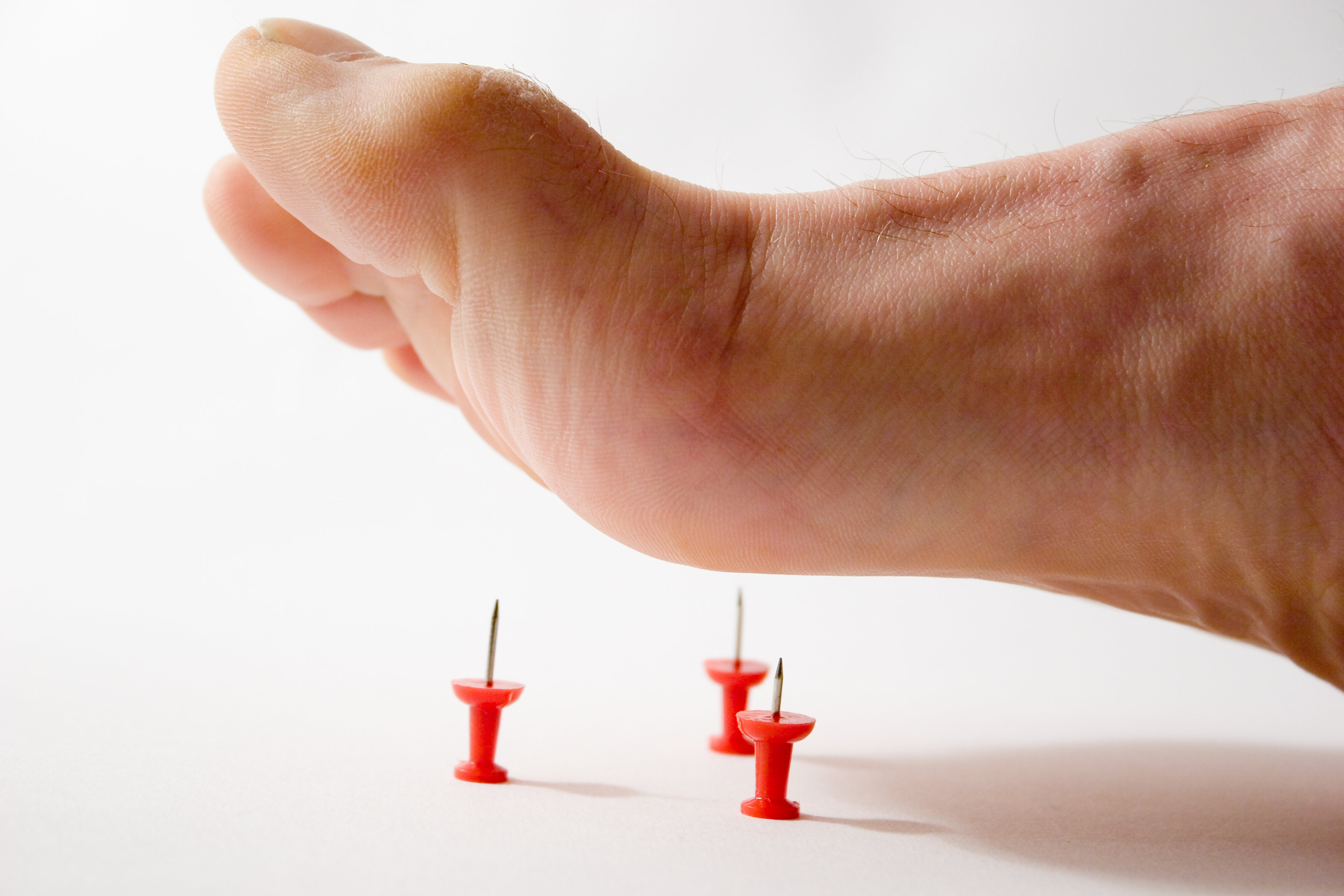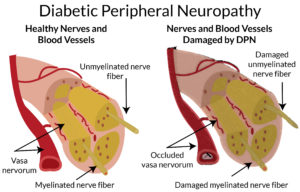
Motor Neuropathy (Deformity) + Ill-Fitting Shoes + Sensory Neuropathy (numbness) = Ulcers (sores) Symptomsĭepending on the type(s) of nerves involved, one or more symptoms may be present in diabetic peripheral neuropathy.
 Cracked skin caused by autonomic neuropathy, combined with sensory neuropathy’s numbness and problems associated with motor neuropathy, can lead to developing a sore. Because of numbness, a patient may not realize that s/he has stepped on a small object and cut the skin. The numbness caused by sensory neuropathy can make the patient unaware that this is happening. Deformities (such as bunions or hammertoes) resulting from motor neuropathy may cause shoes to rub against toes, creating a sore. These damaged nerves can cause problems that encourage development of ulcers. There are several theories as to why this occurs, including the possibilities that high blood glucose or constricted blood vessels produce damage to the nerves.Īs diabetic peripheral neuropathy progresses, various nerves are affected. However, even patients living with diabetes who have excellent blood sugar (glucose) control can develop diabetic neuropathy. The nerve damage that characterizes diabetic peripheral neuropathy is more common in patients with poorly managed diabetes. This serious complication of diabetes can lead to loss of a foot, a leg or even a life. The loss of sensation and other problems associated with nerve damage make a patient prone to developing skin ulcers (open sores) that can become infected and may not heal. Having diabetes for several years may increase the likelihood of having diabetic neuropathy. Some patients have this condition long before they are diagnosed with diabetes. Instead, it usually develops slowly and worsens over time. Autonomic nerves, which allow the body to perform certain involuntary functions, such as sweatingĭiabetic peripheral neuropathy does not emerge overnight. Motor nerves, which control the muscles and give them their strength and tone.
Cracked skin caused by autonomic neuropathy, combined with sensory neuropathy’s numbness and problems associated with motor neuropathy, can lead to developing a sore. Because of numbness, a patient may not realize that s/he has stepped on a small object and cut the skin. The numbness caused by sensory neuropathy can make the patient unaware that this is happening. Deformities (such as bunions or hammertoes) resulting from motor neuropathy may cause shoes to rub against toes, creating a sore. These damaged nerves can cause problems that encourage development of ulcers. There are several theories as to why this occurs, including the possibilities that high blood glucose or constricted blood vessels produce damage to the nerves.Īs diabetic peripheral neuropathy progresses, various nerves are affected. However, even patients living with diabetes who have excellent blood sugar (glucose) control can develop diabetic neuropathy. The nerve damage that characterizes diabetic peripheral neuropathy is more common in patients with poorly managed diabetes. This serious complication of diabetes can lead to loss of a foot, a leg or even a life. The loss of sensation and other problems associated with nerve damage make a patient prone to developing skin ulcers (open sores) that can become infected and may not heal. Having diabetes for several years may increase the likelihood of having diabetic neuropathy. Some patients have this condition long before they are diagnosed with diabetes. Instead, it usually develops slowly and worsens over time. Autonomic nerves, which allow the body to perform certain involuntary functions, such as sweatingĭiabetic peripheral neuropathy does not emerge overnight. Motor nerves, which control the muscles and give them their strength and tone. 
Sensory nerves, which enable people to feel pain, temperature and other sensations.

Three different groups of nerves can be affected by diabetic neuropathy: Diabetic peripheral neuropathy is different from peripheral arterial disease (poor circulation), which affects the blood vessels rather than the nerves. When it affects the arms, hands, legs and feet, it is known as diabetic peripheral neuropathy. Diabetic Peripheral Neuropathy What Is Diabetic Peripheral Neuropathy?ĭiabetic neuropathy is nerve damage caused by diabetes. Please enable Javascript in your browser. Javascript is required to view the content on this page.







 0 kommentar(er)
0 kommentar(er)
